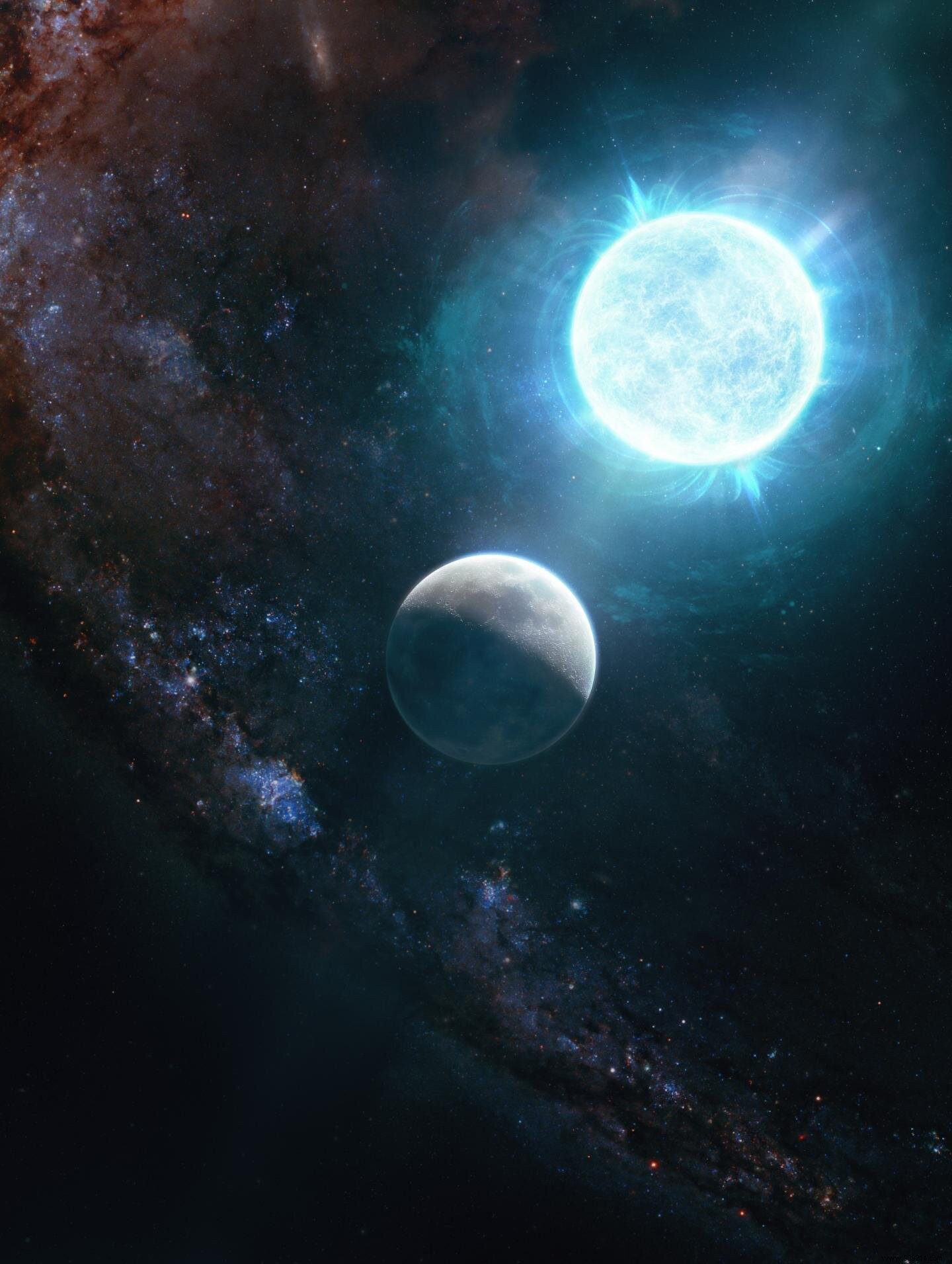A team of astronomers announces the discovery of the smallest and most massive white dwarf to date. The object, which rotates very quickly on itself and offers an incredibly powerful magnetic field, would be the result of the merger of two white dwarfs that once evolved in a binary couple.
As they age, faint or intermediate stars (no more than eight times the mass of the Sun) begin to swell, eventually turning into red giants , absorbing in passing the nearest planets and pushing away the most distant ones, if there are any. After asserting themselves, these stars die, leaving behind only a dense, hot core. You then get a white dwarf. About 97% of all stars, including the Sun, will transform in this way.
If the Sun manages its own system on its own like a big one, remember that many stars in the universe evolve around each other in pairs. These are called binary pairs and these stars age together. If both do not exceed eight solar masses, they will also both end up as white dwarfs.
These stars, which spiral around each other, then lose energy in the form of gravitational waves and end up merging. If both are massive enough, they explode as a Type Ia supernova. If they are below a certain mass threshold, they combine into a single white dwarf heavier than the two progenitor dwarfs . This melting process then increases the magnetic field of this new star and accelerates its rotation .
In the journal Nature, a team of astronomers announces the discovery of one of these "fruits" from a binary pair of white dwarfs.

Isolated from Caltech's Palomar observatory, ZTF J1901+1458 (its name) offers a 2,140 kilometer radius and a mass 1.327 times greater than that of our Sun. It is the smallest and heaviest white dwarf discovered to date, "packing a mass greater than that of our Sun in a body the size of our Moon ", by Ilaria Caiazzo, lead author of the study.
With so much mass, this white dwarf "flirts" with the limits. A little more and this star corpse would indeed collapse on itself before exploding in supernova. The object also rotates very quickly on its axis (every 6 minutes 57 seconds) and offers an incredibly powerful magnetic field. Found only 130 light years away from Earth, this white dwarf is also very young:less than 100 million years old .
In the future, researchers hope to find more such objects. “There are so many issues to deal with. What is the fusion rate of white dwarfs in the galaxy? Is it enough to explain the number of type Ia supernovae? How is a magnetic field generated during these powerful events, and why is there such diversity in magnetic field strengths among white dwarfs? “, asks Dr. Ilaria Caiazzo. "Finding a large population of white dwarfs born from fusions will help us answer all of these questions and more “.